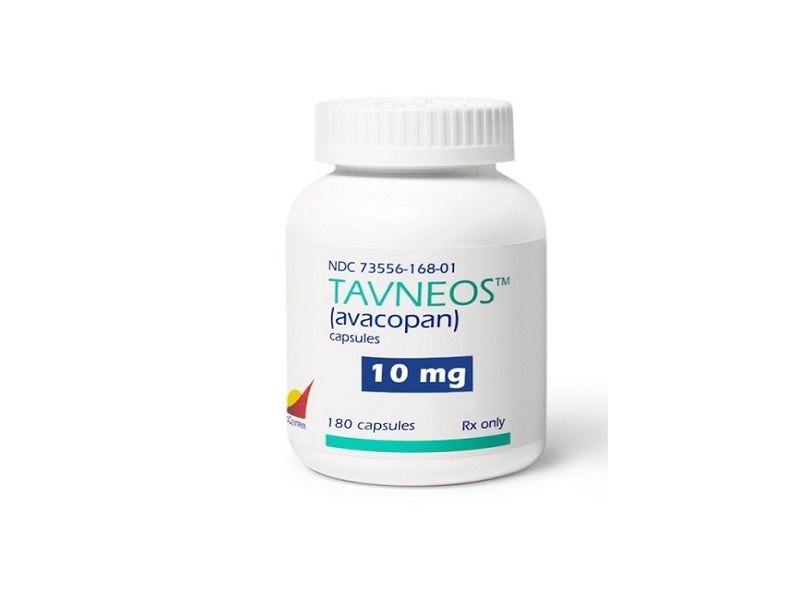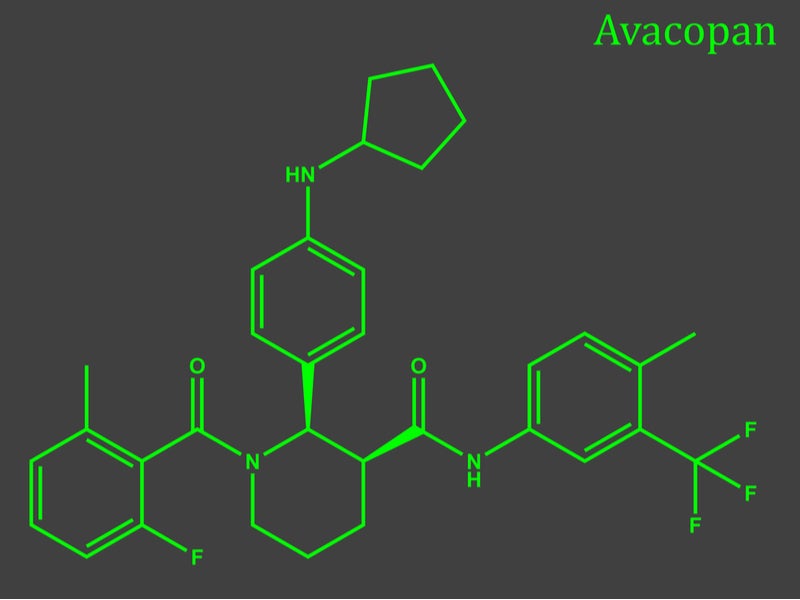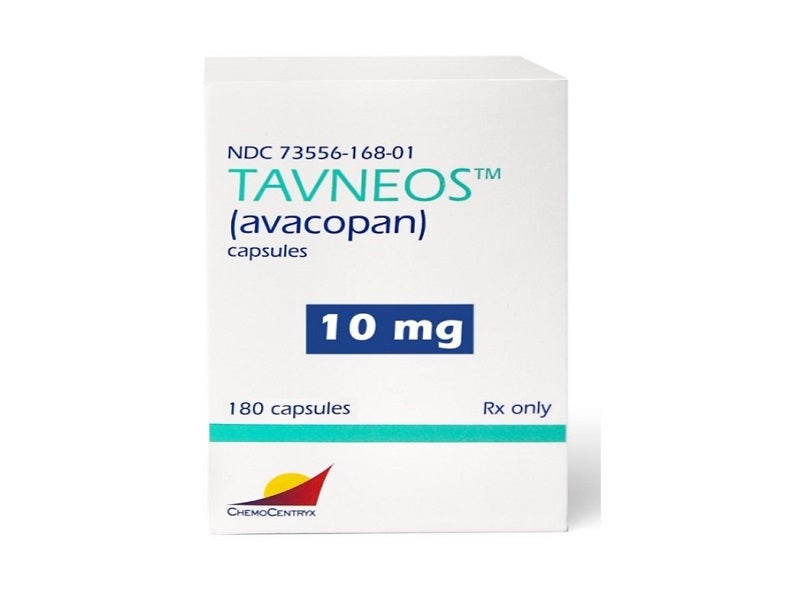Tavneos™ (avacopan) is the first-in-class, orally administered selective complement 5a receptor (C5aR) inhibitor indicated as an adjunctive treatment for active anti-neutrophil cytoplasmic autoantibody (ANCA) associated vasculitis (also called ANCA-associated vasculitis or ANCA vasculitis) in adult patients.
The drug is used in combination with standard therapy specifically for the two major types of ANCA vasculitis, namely granulomatosis with polyangiitis (GPA) and microscopic polyangiitis (MPA).
Tavneos was discovered and developed by ChemoCentryx, a US-based biopharmaceutical company that also owns the commercial rights to the drug in the US.
Vifor Pharma has the exclusive rights to market Tavneos outside the US under an arrangement with ChemoCentryx’s Kidney Health Alliance, an alliance established by ChemoCentryx with Vifor Pharma to co-develop therapies for rare renal diseases. Vifor Pharma has given exclusive rights to Kissei Pharmaceutical to market the drug in Japan.
Tavneos is available as 10mg opaque, yellow or light orange-coloured hard capsules. The recommended dose of the drug is 30mg twice daily, administered with food.
PANTHERx Rare Pharmacy and Amber Specialty Pharmacy were selected as the distribution partners for Tavneos in October 2021.
Regulatory approvals for Tavneos
In July 2020, ChemoCentryx submitted a new drug application (NDA) to the US Food and Drug Administration (FDA) for Tavneos for the treatment of ANCA-associated vasculitis. The NDA was accepted for review in September 2020.
In November 2020, the European Medicines Agency (EMA) accepted a marketing authorisation application (MAA) for Tavneos for the condition.
In September 2021, Kissei Pharmaceutical received approval to market the drug in Japan for the treatment of ANCA vasculitis. The drug received FDA approval in October 2021.
In November 2021, Tavneos received a positive opinion from the EMA’s Committee for Medicinal Products for Human Use (CHMP) for marketing the drug in Europe.
The drug holds orphan drug designation granted by the FDA for ANCA-associated vasculitis and C3 glomerulopathy (C3G).
The drug is also being developed for the treatment of patients with C3G, hidradenitis suppurativa (HS) and lupus nephritis (LN).
ANCA-associated vasculitis (AAV) causes and symptoms
AAV is a rare systemic autoimmune disorder in which the complement pathway is overactivated causing the activation of neutrophils, which leads to the inflammation and destruction of small blood vessels, resulting in organ damage and failure.
Symptoms of AAV include vascular damage, high blood pressure, tiredness and breathing difficulties, as well as tracheal inflammation, numbness, tingling, burning sensations and muscular weakness.
Patients may also experience severe muscular and joint pain, as well as gastrointestinal issues such as blood in the faeces, diarrhoea, nausea, vomiting and abdominal discomfort.
Tavneos’ mechanism of action
Tavneos blocks the interaction between C5aR and the anaphylatoxin C5a, causing the inhibition of C5a-mediated neutrophil activation and migration.
Clinical trials on Tavneos
The FDA’s approval of Tavneos for the treatment of ANCA-associated vasculitis was supported by the safety and efficacy results from ADVOCATE, a double-blind, active-controlled, pivotal Phase III clinical trial.
The trial enrolled 330 patients who were randomised at a 1:1 ratio into two treatment groups, namely the Tavneos group and the Prednisone group.
In the Tavneos group, patients received 30mg of Tavneos twice daily for 52 weeks and placebo matching with prednisone for 20 weeks. In the Prednisone group, patients received a Tavneos-matching placebo twice daily for 52 weeks plus prednisone.
The primary outcome of the trial was disease remission at week 26 and sustained remission at week 52, as measured by the Birmingham Vasculitis Activity Score (BVAS).
At week 26, 72.3% of patients in the Tavneos arm and 70.1% of patients in the prednisone arm achieved remission.
At week 52, the percentage of patients who achieved sustained remission in the Tavneos group was significantly higher (65.7%) compared to the prednisone group (54.9%).
The most common adverse reactions observed in patients receiving the drug during the clinical trial were hypertension, vomiting, paraesthesia, nausea, upper abdominal pain, dizziness, diarrhoea, headache, rash and increase in blood creatinine.






